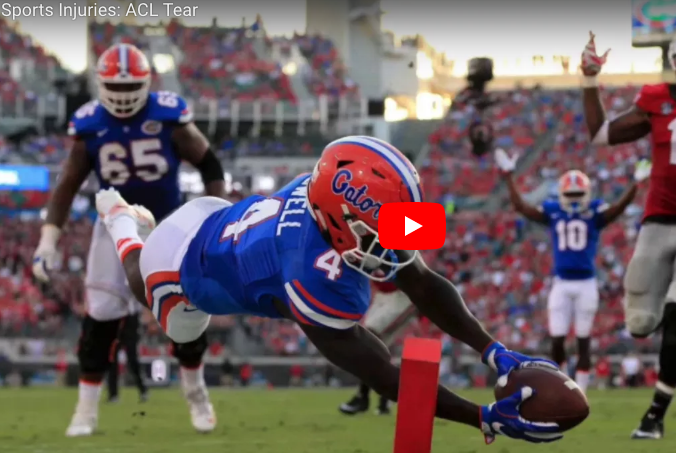The Most Common Sports Injury: Anterior Cruciate Ligament Tears
March 27, 2018
Anterior Cruciate Ligament Tears
Anterior Cruciate Ligament tears, or otherwise known as, ACL tears, can be a damper to one’s athletic career. The ACL is one of two major ligaments found in the knee. It helps with stability while running, twisting, turning, stopping fast, or changing direction. ACL injuries can occur from the same exact things as well; running, twisting, turning, changing direction, stopping fast, or even a direct hit to the knee. Although ACL injuries are considered to be injuries in sports, 70% of injuries can be incurred with little to no contact at all. You could move and twist your knee in a vulnerable position that gives you the high chances of this injury.
How Does It Occur
Studies have shown that young female athletes are more likely to tear their ACL than young male athletes. Women are two to eight times more likely than males, according to Dr. Barry Boden of the Orthopedic Center in Rockville, MD. There’s many theories as to why women are more susceptible to this type of injury. Dr. Boden stated that it may be because women have a sort of “knock-kneed” alignment of their knees. There’s been research that the levels of estrogen in the body can also have effect on the ligaments. ACL injuries can also happen when an athlete tends to land flat-footed instead of on the balls of their feet. “If the calf muscles are not absorbing the force, and if the knee is not in the proper position, the knee buckles and tears the ACL,” states Dr. Boden.
Solution
With an acute injury, a person may describe hearing a pop, followed by extreme pain in their knee. The pain makes lifting heavy objects or walking intolerable. The knee joint will become swollen for at least two weeks. If left untreated the knee will remain unstable. Although the knee is unstable you can live without your ACL for the rest of your life; if you are not an active person. If you want to play sports or have a future job that involves high levels of activity a patient usually undergoes surgery. There’s many methods to ACL reconstruction, it will depend on the doctor and what he or she thinks is the best solution for you. After surgery all doctors suggest you immediately start physical therapy. The healing process after surgery is roughly 9-12 months long. Most doctors will not their patients back into sports until the athlete has had a year to recover. Most athletes who go back to sports early on, 30% of them end up re-tearing their muscle or tear the ACL in the opposite leg.
Prevention
The risk of tearing the ligament can be reduced by maintaining strength in your leg muscles, such as the quadricep, and flexibility. For any type of sports, no matter what you’re in, warming up, stretching, and cooling down are the best ways to protect your joints and muscles. Many people believe that wearing braces helps prevent injuries. In fact, wearing a brace can be worse if anything. Although braces can support your knee, it does not prevent injuries. Braces often weaken the muscles in your legs, making your muscles not use to strenuous activities. Strengthening exercises and agility drills are great for your knees. Plyometric exercises build strengthen, power, and balance. It helps teach the body how to jump and land properly reducing your risk to injury.



